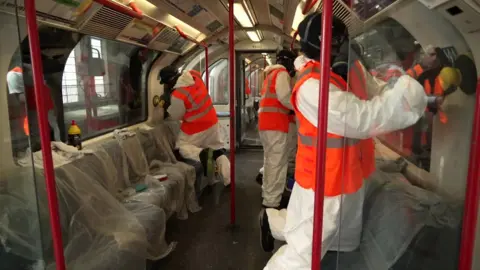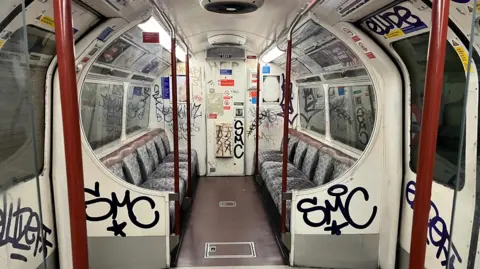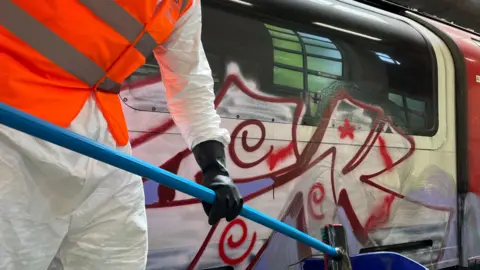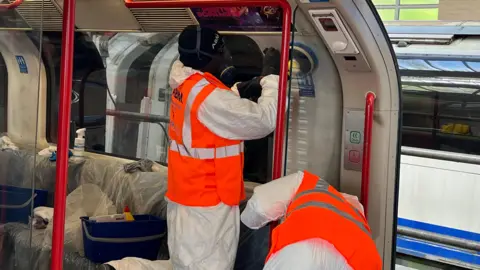Thousands of pieces of Tube graffiti removed daily
 BBC
BBCTransport for London (TfL) says it is removing about 4,000 pieces of graffiti per day on the Central and Bakerloo Tube lines.
It says it is dealing with a huge increase in vandalism on the trains as well as challenges in getting the trains cleaned.
TfL says it has a reduced number of trains on the Central line as some are being upgraded, five at a time. The Bakerloo line has the oldest fleet, and hence it has fewer trains.
The transport body says it is for this reason that it has to put trains back into service with graffiti, otherwise the service would not be able to continue to the same timetable.
At the Hainault Depot, the team says it is "working around the clock", having removed 23,000 pieces of graffiti in the past two months.
TfL's Dan Pincott said: "To remove it we're using buffers because it's leather dye, not paint.
"It will not come off with normal graffiti remover, so it needs special tools.
"It's long hot hard hours for them to remove it."

Alcohol-based leather dye is the toughest to get off as it soaks into the fibre, as opposed to paint which sits on the surface.
The process can take days, TfL says.


Director of asset performance delivery, Richard Jones, said: "Typically we had the spares previously where if the train was damaged inside or outside, it would not go into service.
"But in order to maintain the service, some of the damaged trains are having to go into public use."

Mr Jones added: "It makes the Underground feel less safe and it can be a magnet for other criminal activity so it's important to remove and we take it seriously.
"Customers do complain a lot."
TfL says it is planning to introduce more cleaning teams as well as working with the police to target vandals.
Listen to the best of BBC Radio London on Sounds and follow BBC London on Facebook, X and Instagram. Send your story ideas to [email protected]
